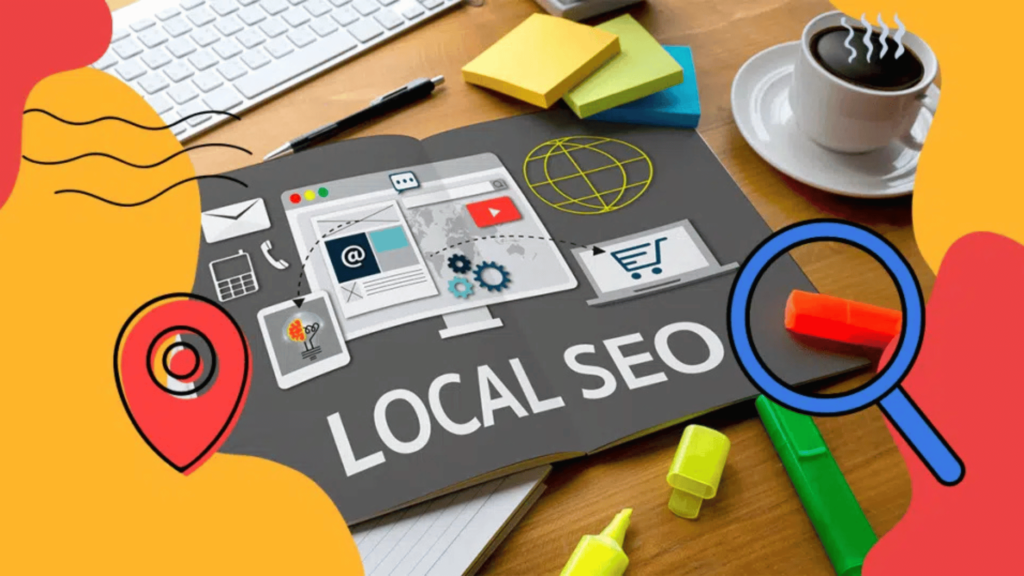In today’s competitive landscape, having a strong digital presence is crucial for restaurants. With millions of diners relying on online searches to choose where to eat, local SEO has become a game-changer. It not only drives foot traffic but also enhances restaurant discovery, making your business stand out in search results. In this blog, we’ll explore how local SEO can revolutionize your restaurant’s digital footprint and provide actionable tips to get started.
Why Local SEO is Crucial for Restaurants

1. Enhanced Online Visibility
Local SEO ensures your restaurant appears prominently on search engine results pages (SERPs) when potential customers search for eateries in your area. For example, optimizing for keywords like “best Italian restaurant near me” can lead to more clicks and visits. By integrating geo-specific keywords and ensuring your business is listed in local directories, your restaurant becomes more discoverable, giving you a competitive edge.
2. Targeted Customer Reach
Unlike generic SEO, local SEO targets customers who are actively looking for nearby dining options. This means higher chances of converting searchers into diners. These diners are often ready to make decisions quickly, making your restaurant’s visibility at the top of local searches invaluable.
3. Improved Google Maps Presence
Restaurants with optimized local SEO are more likely to appear on Google Maps, increasing their chances of being discovered by on-the-go users. Additionally, being listed in the top three spots of the Google Map Pack can drive significant foot traffic to your restaurant.
Key Components of Local SEO for Restaurants

1. Google My Business Optimization
Creating and optimizing your Google My Business (GMB) profile is the cornerstone of local SEO. Ensure that:
- Your restaurant’s name, address, and phone number (NAP) are accurate.
- High-quality images of your menu and ambiance are uploaded.
- Regular updates like new dishes or offers are shared.
Optimizing your GMB profile also allows you to respond to customer reviews, answer FAQs, and share engaging posts, enhancing your credibility and engagement with potential customers.
2. Keyword Research and Optimization
Identify location-specific keywords your audience uses and incorporate them naturally into your website content, meta descriptions, and blog posts. Use tools like Google Keyword Planner or SEMrush to find the best-performing local keywords, such as “top-rated seafood restaurant in [City].”
3. Online Reviews and Ratings
Encourage customers to leave reviews on platforms like Google, Swiggy, and Zomato. Positive reviews not only build trust but also boost your SEO rankings. Responding to reviews—whether positive or negative—demonstrates your dedication to customer satisfaction and helps you build stronger relationships with your audience.
4. Mobile Optimization
Since most restaurant searches are done on mobile devices, ensure your website is mobile-friendly. Quick loading times and an intuitive interface can significantly improve user experience. Features like click-to-call buttons and easy navigation menus can make a huge difference in converting visitors to diners.
5. Localized Content Creation
Create blog posts or articles about local events, food trends, or your restaurant’s story. This helps connect with the community and improves your SEO. Highlighting partnerships with local farms or suppliers can also appeal to the growing number of diners seeking locally-sourced ingredients.
Practical Digital Marketing Hacks for Local SEO

1. Leverage Social Media
Social platforms like Instagram and Facebook are ideal for promoting location-based content. Use geotags, hashtags, and local collaborations to drive traffic. Running local contests or campaigns featuring your popular dishes can also increase visibility and engagement.
2. Optimize for Voice Search
With the rise of voice-activated devices, optimize your content for conversational phrases like “Where can I find vegan pizza in [City]?” Include questions and answers in your website’s content to align with the way people use voice search.
3. Use Schema Markup
Implementing schema markup helps search engines understand your restaurant’s offerings, leading to better rankings in local searches. For example, adding structured data about your menu, hours of operation, and special events can enhance your SERP listing.
4. List Your Restaurant in Online Directories
Ensure your restaurant’s details are consistent across online directories like TripAdvisor, Justdial, and Swiggy. This enhances credibility and SEO. Inconsistent information can confuse search engines and potential customers, so regular audits are essential.
5. Run Localized Ads
Combining local SEO efforts with pay-per-click (PPC) campaigns targeting specific demographics and areas can maximize reach. Platforms like Google Ads and Facebook Ads allow you to run hyper-localized campaigns. For instance:
- Promote special offers or discounts to users within a 5-mile radius.
- Use geo-targeting to reach users searching for dining options in specific neighborhoods.
- Test different ad creatives, such as showcasing your signature dishes or customer testimonials.
Localized ads work best when paired with compelling visuals and clear calls to action (CTAs). Additionally, leveraging retargeting ads can bring back visitors who previously explored your website but didn’t convert. Integrating these ads with seasonal promotions or events can drive significant traffic and boost conversions.
FAQ’s
Q1. What is local SEO, and why is it important for restaurants?
Local SEO focuses on optimizing your online presence to attract more business from relevant local searches. For restaurants, it’s essential as it drives foot traffic and online orders.
Q2. How can I improve my restaurant’s online reviews?
Encourage satisfied customers to leave reviews by offering incentives like discounts or free desserts. Responding to reviews—both positive and negative—shows your commitment to customer satisfaction.
Q3. Can social media boost local SEO efforts?
Yes, social media platforms complement local SEO by driving engagement, sharing location-based content, and encouraging user-generated posts with geotags.
Q4. Is mobile optimization necessary for local SEO?
Absolutely. A majority of local searches happen on mobile devices. Ensuring your website is mobile-friendly is critical for retaining visitors.
Q5. How often should I update my Google My Business profile?
Regularly update your GMB profile with new photos, posts about events or promotions, and accurate business information. This keeps your listing relevant and engaging.








